#shoden
Explore tagged Tumblr posts
Text
Why Reiki Could Be Your Next Step in Personal Growth
Ever wondered why some people seem to radiate wellbeing? They have this glow about them, this sense of being grounded and at peace, even when life gets hectic.
More often than not, these people have discovered something that most of us miss: the power of working with energy.
Now, you might think this sounds a bit strange. Energy work? Really? But stay with me, because understanding how energy affects us might just change your life.
What Makes Reiki Different?
Reiki isn't like other healing methods. There's no physical manipulation of the body, no complex techniques to master. It works simply by channeling energy through light touch or hands hovering above the body.
But don't let this simplicity fool you.
Think of it like breathing. Breathing is simple, yet it's essential for life. Reiki is similar - it's straightforward but remarkably effective.
How Reiki Actually Works
When you receive Reiki, something interesting happens. The practitioner becomes like a conduit for universal life force energy. This energy then flows to where your body needs it most.
Your body is incredibly intelligent. It knows exactly what it needs - we just need to give it the right resources.
That's what makes Reiki special. You don't need to diagnose problems or figure out what needs fixing. The energy goes where it's needed, doing what needs to be done.
Beyond the Basics
Here's something most people don't realize about Reiki: it's not just about healing specific issues. It's about creating balance in your entire system.
When your energy system is balanced:
You're naturally more resilient to stress
Your body can heal more efficiently
You think more clearly
You sleep better
You have more energy throughout the day
The Learning Path
Learning Reiki happens in three stages:
Reiki Level 1 is where it all begins. You learn to connect with Reiki energy and use it for self-healing and helping others. This level alone can transform your life.
Reiki Level 2 takes things deeper. You learn sacred symbols that enhance your connection to Reiki energy. You also learn distance healing - yes, you can send healing energy to someone on the other side of the world!
Reiki Master Level is where you master advanced techniques and, if you choose, learn to teach others.
The Less Known Benefits
Here's something interesting that most people don't know about Reiki: it can actually help improve your intuition. When you work with energy regularly, you become more attuned to subtle information around you.
You might find yourself:
Knowing who's about to call before the phone rings
Sensing when someone needs help before they ask
Making better decisions because you're more in tune with your gut feelings
A Natural Part of Life
One of the beautiful things about Reiki is how naturally it fits into daily life. You don't need special equipment. You don't need to set aside hours each day.
Got a headache? Give yourself some Reiki while watching TV. Can't sleep? Use Reiki as you lie in bed. Stressed at work? Take a few minutes to run energy while sitting at your desk.
Moving Forward
If you're interested in learning more about Reiki, there are several ways to start:
Book a session with a qualified practitioner
Read about others' experiences with Reiki
Consider taking a Level 1 course
The key is finding a teacher who maintains the integrity of traditional Japanese Reiki while making it accessible and practical for modern life.
Remember: Reiki isn't about becoming someone different - it's about becoming more fully yourself. It's about tapping into abilities you already have but might not know how to access.
Are you ready to discover what Reiki could do for you?
Looking to learn Reiki in Melbourne? Our courses offer comprehensive training in traditional Japanese Reiki, with extensive support before, during, and after your learning experience. Find out more about our upcoming courses and start your Reiki journey.
#reiki#healing#energy healing#spirituality#spiritual healing#reikihealing#meditation#guide#mindfulness#health#reikicourses#reiki healing#reiki courses#reiki healing course#reiki master#master reiki#reiki level 1#reiki level 2#reiki master level#shoden#okuden#shinpiden
2 notes
·
View notes
Text
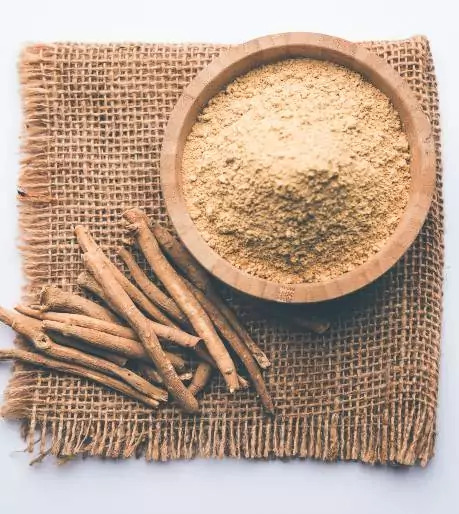
Shoden® Ashwagandha Extract Manufacturer, price |Arjuna Natural
Shoden®- Arjuna Natural's Shoden® is a clinically-tested natural Ashwagandha extract with 35% active Withanolide Glycosides. Read more...
0 notes
Text
Explore Japan 🇯🇵: The Alluring Beauty of Japanese Gardens
youtube
„It is said that David Bowie was moved to tears when he stared at this garden. He must have felt a strong connection with nature and forgot just for a while the emptiness of society.“
-Emmanuel Mares about Shoden-ji Temple
#quotes#emmanuel mares#japanese garden#japan#kyoto#beauty#moved to tears#saiho-ji#shoden-ji#kennin-ji#temple#traveling#anticipation#Youtube
1 note
·
View note
Text
Names. Cuz I can't really call them by "Brawler" or "Gunner" forever 3:
Yeah, Shoto is like American Japanese, freaking blonde


Always like SSB4 sillies, I just had to draw like that-
Also smh of ShoDen and DaniAllen lmfao-




ShoDen being my NUzi

65 notes
·
View notes
Text
A daily reiki practice
Though energy work in Reiki is simple, but to maintain and strengthened Reiki flow within us, we need to dedicate an hour or two to do some Reiki exercise.
The question is, Reiki has been developed into so many style with a lot of techniques and symbols, so what Reiki style and techniques to be practiced?
Many Reiki masters has its own answers, but to me, we need to go back to what Reiki is in the first place which is a technique to connect our soul to the heart of the universe through meditative state of mind.
Therefore, we need to eliminate unnecessary techniques every time and enter into deep meditative practice in the end.
To do so, i offer a simple guideline to practice Reiki daily
1. To do self healing whether you are already pass level 1 or shoden in Reiki, you still need to practice self healing to yourself, because self healing soften the muscle and bring clarity to your physic quickly, this is an important step before any further exercise. 2. Cakra cleansing method In Gendai Reiki ho we use Cakra Kassei kokyuho technique but you can use any technique to cleanse cakras in your own Reiki styles. Clean cakra help you feel balance and fresh. Bring clarity to the mind 3. Light breathing exercise This technique put our consciousness to Tan tien and at the same time deliver Reiki energy to whole body area, you will feel a heat sensation and your cakra get more active. 4. Gasho meditation At last, the last menu in this exercise. It is purely a meditation practice aiming to melt our consciousness with Reiki consciousness. Gasho means, that in original Reiki tradition this meditation was conducted in Gasho position, both hand in prayer position in front of the chest ( namaste position).
Where is the symbols? well symbol can be used just before start the entire practice, it use is to assist you in your practice. Don’t think that the symbol is sacred, it is only a helping tool, the most sacred in the end is your connection with the Most Highest within you.
Peace and prosper
#Husadareiki#Reiki#qigong#qi gong#spiritual#yoga#sadhguru#rinpoche#tibetan#bali#guru#tao#taoism#religion#selfhelp#anthonyrobbin#christian
8 notes
·
View notes
Text

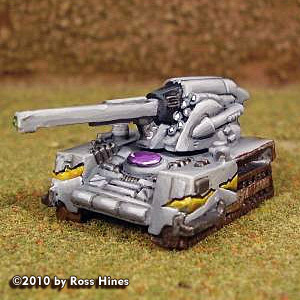
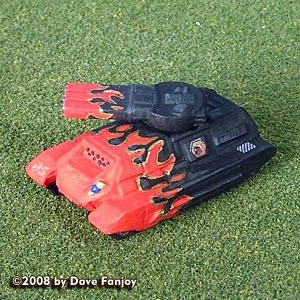


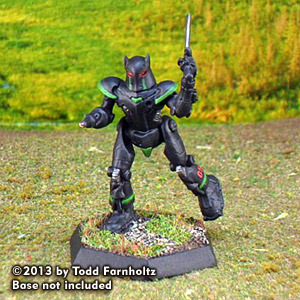


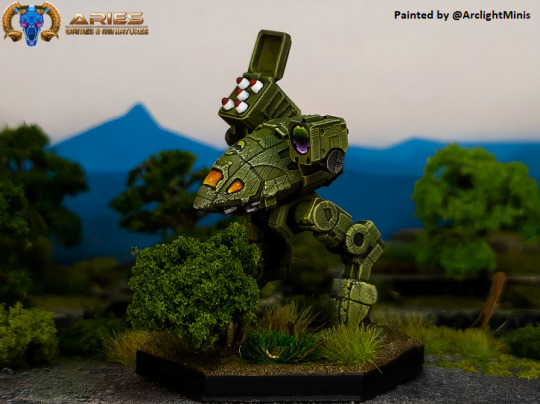

Restocks are in from Iron Wind Metals for BattleTech miniatures!
20-200 Griffin GRF-6S 20-203 Solitaire 20-224 Shadow Hawk IIC 4 20-235 Partisan Heavy Tank 20-248 Donar Assault Helicoptor 20-255 Heimdall Monitor Tank 20-258 Scimitar Medium Hover Tank (2) 20-284 Ripper VTOL 20-288 Enyo Strike Tank (2) 20-296 Shoden Assaunt Vehicle (Standard) 20-309 Blizzard Hover Transport (Standard) (2) 20-330 Burke Tank 20-419 Battle Hawk BH-K305 20-428 Asshur Artillery Spotter (2) 20-435 Hellstar 20-493 Bear Cub 20-5005 Orion ON1-K (with Kerensky) 20-5008 Flamberge Prime 20-5009 Quasit QUA-51M MilitiaMech 20-5019 Kestrel VTOL 20-5042 Ebony MEB-9 / MEB-10 20-5062 Morrigan 20-5105 Cardinal Transport VTOL 20-5169 Shadow Hawk SHD-2Hb 20-5183 Locust LCT-1V 20-5189 Catapult CPLT-C3 / C5 20-5216 Marauder MAD-3R / 5M 20-623 SRM Carrier (2) 20-639 Kanga Medium Hovertank (2) 20-685 Bandit Hovercraft (2) 20-699 Emperor EMP-6A 20-733 Oro Heavy Tank (Standard) (2) 20-749 Goblin Infantry Support Vehicle (2) 20-762 Pillager PLG-3Z 20-767 Talon TLN-5W 20-786 Hachiman Fire Support (Standard) (2) 20-800 Hex Bases (4) 20-861 JagerMech JM6-S 20-873 Spider SDR-5V 20-891 Wolfhound WLF-1 20-909 Dragon Fire DGR-3F 20-930 Catapult CPLT-C4 20-9122 Battleforce Hex Base 99-201 Large Flat Top Hex Base #1 99-202 Large Flat Top Hex Base #2 99-203 Extra Large Flat Top Hex Base AC-005 Large Space Base BT-004 Afreet Battle Armor BT-008 Void Battle Armor BT-030 Sylph Battle Armor BT-031 Infiltrator MK 2 BT-062 Hover Bike BT-063 Track Bike BT-066 Scout ATV BT-133 Corona Battle Armor BT-134 Gray Death Legion Battle Armor BT-188 Nighthawk Battle Armor BT-189 Kobold Battle Armor BT-202 Rogue Bear Heavy Battle Armor BT-224 Heavy Jump Infantry BT-226 Fast Recon BT-227 Thunderbird Battle Armor BT-231 Ironhold Battle Armor BT-237 Recon Infantry BT-240 SpecOps Paratrooper BT-244 Heavy Infantry - Standing BT-245 Heavy Infantry - Firing BT-321 Hover APC BT-333 Phoenix Hawk LAM MK I PHX-HK1 (Fighter) BT-370 Kurita Infantry (3) BT-371 Davion Infantry (3) BT-372 Savannah Master Hovercraft BT-381 Basic Inner Sphere Battle Armor (3) BT-382 Kanazuchi Battle Armor BT-384 Achileus Battle Armor (3) BT-388 Salamander Battle Armor (3) BT-390 Fa-Shih Battle Armor (3) BT-391 Fenrir Battle Armor (1) BT-393 Kage Battle Armor Squad (4) BT-435 Shen Long Battle Armor (3) BT-436 Buraq (Standard) Battle Armor BT-463 War Crow A FT-020 Avar Mech Scale Fighter FT-028 Sulla Mech Scale Fighter OP-118 Marauder MAD-3D, 5S, and 5T Gun Sprue 20-5183D Locust LCT-1V Arm and CT Med Laser Sprue 20-758WPS Cauldron-Born (Omni) Weapons 20-814MSA Zeus Missile Arm
#battletech#alphastrike#ironwindmetals#battletechalphastrike#miniatures#catalystgamelabs#battlemech#battletechminiatures#battletechpaintingandcustoms#classicbattletech#miniaturewargaming#mechwarrior#mecha#gaming#boardgames#tabletop#tabletopgames#tabletopgaming#wargaming#wargames#hobby#scifi#sciencefiction#miniaturepainting#mech#6mmminis#6mmscifi#dougram#gundam#robotech
6 notes
·
View notes
Text
Achieve Mental Balance and Peace with Reiki Master in Melbourne
Since life is becoming more and more hectic these days, more people are drawn to practising Reiki. To assist a diverse range of people, and take better care of their bodies, the best Reiki master in Melbourne provides a range of Reiki courses. There are many levels of Reiki, and one may move on to the next one if they have mastered the previous one and studied all of the course material.
Numerous individuals like and comprehend Reiki, and by taking Reiki Level 1 and Reiki level 2 in Melbourne taught by authorised teachers at the best Reiki centres, one may discover the amazing benefits of practising Reiki. Reiki treatments can help reduce stress, anxiety, and tension in the body and mind while promoting deep relaxation.

Given the high levels of stress in modern society, this is particularly crucial and Reiki helps those who are emotionally unstable, which is a typical circumstance, by promoting inner peace and providing comfort. Numerous people love Reiki because it may aid with a variety of health issues.
List of Various Reiki Courses Offered by Leading Reiki Wellness Facilities:
Level 1 Reiki: Known as Shoden, this training allows one to delve into the intriguing world of Reiki. Through the training, one may understand the five pillars of the Usui system of natural healing and recognise the long history of Reiki. After taking this course, participants have a greater grasp of how Reiki works and how to perform certain Reiki treatments. In this session, the best Reiki wellness centres also teach Reiki and Chakras.
Reiki Level 2: Also referred to as Okuden, this stage is initiated following the completion of the previous one. One learns how to use the three sacred symbols that are used in the Reiki procedure. Furthermore, passing this course makes one eligible to operate as a licensed Reiki practitioner. A Reiki manual is also provided, and remote Reiki is another skill that is mastered during this process.
Reiki Level 3a: One must practice and understand the fundamentals of Reiki before embarking on this journey. A person who completes this course is certified as a full-fledged Reiki practitioner. One acquires the master sign that may be utilised in addition to learning new methods to apply Reiki more effectively.
All things considered, individuals choose Reiki because it offers a gentle and non-invasive way to promote healing, relaxation, and overall health. Register for a Reiki course and get in contact with the best Reiki wellness centres.
Source
1 note
·
View note
Text
Unlock Your Inner Healer: Exploring Reiki Courses and Healing in Melbourne
Are you feeling stressed, overwhelmed, or simply seeking a deeper sense of peace and well-being? Perhaps you've heard whispers about the gentle yet powerful energy healing modality known as Reiki? If you are searching for reiki courses Melbourne, you've come to the right place! This blog will guide you through the world of Reiki, its incredible benefits, and how you can embark on your own Reiki journey.
What is Reiki and Why is Melbourne Embracing It?
Reiki, a Japanese technique for stress reduction and relaxation, promotes healing by channelling universal life force energy through the practitioner's hands to the recipient. Reiki healing near me is a non-invasive and holistic approach that can support physical, emotional, mental, and spiritual well-being. In the vibrant and health-conscious city of Melbourne, Reiki's popularity is steadily growing as more individuals seek natural and complementary therapies to enhance their lives.

When choosing a practitioner, consider their experience, qualifications, and your own intuition. A brief introductory call can often help you determine if they are the right fit for you.
Empower Yourself: Exploring Reiki Courses in Melbourne
Have you ever felt drawn to help others heal or wanted to deepen your own connection to this universal energy? Taking reiki courses in Melbourne can empower you to become a channel for Reiki yourself. These courses are typically structured in levels:
Reiki Level 1 (Shoden): This introductory level focuses on self-healing and the basic principles of Reiki. You'll learn the history of Reiki, hand positions for self and others, and receive attunements that open your energy channels.
Reiki Level 2 (Okuden): This level delves deeper into Reiki techniques, including the use of symbols to enhance energy and facilitate distance healing. You'll learn how to send Reiki across time and space and work with emotional and mental imbalances.
Reiki Level 3 (Shinpiden/Master Practitioner): This advanced level further refines your Reiki skills and often involves learning the Master symbol. It can also prepare you to teach Reiki to others, depending on the lineage and teacher.
Take the first step today and discover the profound benefits that Reiki can bring to your life.
Source
0 notes
Text
Wat leer je bij reiki 1?
Reiki 1 (Shoden)
Reiki 1, ook wel Shoden genoemd (Japans voor "eerste graad"), is de eerste inwijdingsgraad in de Reiki-leer. Dit niveau richt zich op zelfheling en het leren werken met de universele levensenergie. Tijdens een Reiki 1-cursus leer je de basisprincipes en technieken van Reiki, inclusief handposities om energie door te geven aan jezelf en anderen.
Wat leer je bij Reiki 1?
De oorsprong en principes van Reiki
Het ontvangen van inwijdingen (energieafstemmingen) door een Reiki Master
Het voelen en sturen van energie
Handposities voor zelfbehandeling en behandeling van anderen
Het reinigen en balanceren van je eigen energie
Kenmerken van Reiki 1:
Geschikt voor beginners, geen ervaring nodig
De focus ligt op zelfheling en het intuïtief aanvoelen van energie
Werkt met fysieke aanraking, zonder symbolen of afstandsbehandelingen
Na de cursus kun je Reiki toepassen op jezelf, familie, vrienden en huisdieren
Na Reiki 1 kun je, als je wilt, verdergaan naar Reiki 2 (Okuden), waarbij je leert werken met symbolen en afstandsbehandelingen.
Start jouw cursus bij mij! www.online-reiki-cursussen.be
0 notes
Text
Reiki Classes, Training, Healing, and Mastery: A Comprehensive Guide to Healing and Personal Growth
Reiki, a form of energy healing that originated in Japan, has become increasingly popular worldwide as more people seek ways to improve their physical, emotional, and spiritual well-being. Whether you’re looking to enhance your personal growth or embark on a new career as a Reiki healer, Reiki classes and training offer a transformative experience. At Houston Reiki, we offer comprehensive Reiki classes and training programs designed to meet the needs of everyone from beginners to those seeking to become Reiki Masters. In this blog, we’ll explore the various Reiki classes available, the importance of Reiki training, and the benefits of Reiki healing.
What is Reiki?
Reiki is a holistic healing technique that works with the body's energy to promote balance, reduce stress, and facilitate emotional healing. The word "Reiki" comes from two Japanese words: "Rei," meaning universal, and "Ki," meaning life force energy. This technique involves the transfer of energy through the hands of the practitioner to the recipient, restoring balance and harmony to their body and mind.
Reiki is a non-invasive and deeply relaxing treatment, ideal for those who wish to experience mental clarity, emotional stability, and physical vitality. It can be used alongside traditional medicine, making it a complementary therapy for a variety of ailments, including chronic pain, anxiety, depression, and stress.
Reiki Classes: A Gateway to Personal Transformation
If you're looking to explore Reiki, the first step is enrolling in Reiki classes. Houston Reiki offers Reiki classes designed to help students connect with their inner energy and develop the skills necessary to become proficient in energy healing. These classes are typically divided into three main levels or degrees:
Level 1 (Shoden): This is the introductory level where students learn the basics of Reiki, including hand positions, how to channel energy, and techniques for self-healing. This level focuses on healing yourself and others through hands-on practice.
Level 2 (Okuden): At this level, students learn to use symbols and mantras to enhance their energy flow, allowing them to focus on emotional and mental healing. This level introduces distance healing, enabling practitioners to send Reiki energy across time and space.
Level 3 (Shinpiden) or Reiki Master: The final level of training is for those who wish to become Reiki Masters. It’s an advanced course where practitioners learn the techniques to teach and pass on the Reiki attunements to others.
Reiki Training: Developing Your Skills as a Healer
Reiki training goes beyond learning techniques; it’s about personal growth and the ability to use Reiki for healing. When you take part in Reiki training, you not only gain new knowledge and skills but also embark on a spiritual journey. The process of Reiki training helps you become more attuned to your inner energy, allowing you to better understand and heal yourself and others.
Houston Reiki offers a structured training program to guide you at every level. With hands-on practice, personal guidance, and support from experienced Reiki Masters, you’ll develop confidence in your healing abilities. Reiki training is a beautiful experience that nurtures personal and spiritual growth, helping you live a more centered and peaceful life.
Reiki Healing Classes: Healing Yourself and Others
Reiki healing classes are designed for those who want to learn how to use Reiki energy for healing purposes. These classes teach the various hand positions and techniques that practitioners use to direct energy into the body, clearing blockages and restoring balance. In addition to the hands-on healing methods, students learn how to assess the energy of others and identify areas that need attention.
Reiki healing classes can benefit anyone, regardless of whether you wish to become a professional Reiki healer. Even if you’re not pursuing Reiki as a career, learning Reiki can enhance your life by promoting physical, mental, and emotional wellness. Many students report feeling more relaxed, centered, and energized after completing a Reiki class.
Reiki Master: The Ultimate Level of Reiki Practice
Becoming a Reiki Master is the pinnacle of Reiki training. It requires dedication, discipline, and a deep commitment to healing both yourself and others. Reiki Masters are trained to teach Reiki to others, passing on their knowledge and expertise through attunements. This level of training also involves a deeper understanding of energy and how to harness it for the highest good.
At Houston Reiki, our Reiki Master program is designed to help you reach the highest levels of Reiki practice. As a Reiki Master, you’ll gain the skills necessary to guide students through their Reiki journey, helping others discover the transformative power of Reiki energy. Becoming a Reiki Master not only enhances your healing abilities but also provides you with the opportunity to help others heal and grow.
Why Choose Houston Reiki for Your Reiki Classes and Training?
At Houston Reiki, we’re dedicated to providing high-quality Reiki education in a supportive and nurturing environment. Our experienced Reiki Masters are passionate about helping students achieve their full potential, whether they’re seeking personal healing or a professional career in Reiki.
With our well-structured Reiki classes and training programs, you’ll have the tools and guidance needed to become a skilled and compassionate Reiki practitioner. We offer a welcoming community where you can learn, grow, and connect with others on a similar healing path.
Conclusion
Whether you’re looking to enhance your personal growth or become a professional Reiki healer, Reiki classes, training, and healing sessions offer powerful tools for transformation. At Houston Reiki, we provide a comprehensive learning experience that nurtures your development at every stage of your Reiki journey. Start your healing path today and experience the transformative power of Reiki energy.
0 notes
Text
Japan | Wood Shrines
Aesthetic and Decor


Culture
Shikinen Sengu:
The sacred precinct is destroyed and rebuilt in alternative locations 20 years apart; a traditional renewal process delegated to 3 successive generations of artisans.

"When a religion scholar participated in the ritual, he felt that an old deity died and a new deity was born."
Materials

Structure
Chigui: finishes that result from joining methods used on wooden carcasses.
Metal Tops: reduces % humidity and wood rot
Katsuogi: ridge slats supported by 2 cypress rafters, hold the roof boards and help secure thatched roofing.


Walls: wooden planks fitted horizontally into vertical beams
Shoden: portico or porch [3/2m]
Columns: buried in the ground Shoden: Main Sanctuary


0 notes
Text

Shoden Eigen-in Window with Oda Family Crest
1 note
·
View note
Text
Go with the flow Take time Don’t rush around Be deliberate See something new Be outside ******** Favorites - Experience: Mac mac bossanova and Isamu Kenmochi stools at Honen-in (songs Shinkansen by Toninho Horta and Batucada by Segio Mendes) - Coffee: Thai macchiato and Kurasu Kyoto Station, macchiato at about life brewers - Spot: Shibuya Wine Bar Cabotte (split dishes and the white burgundy were great) - Dish: Roast pork at Complete Kyoto, Puttanesca at Marco Kyoto, Orange Thai Salad at Koikoi Shoten, Bear sashimi / soup at Gibier Miyama, 35 gyozas at Yasubei - Outdoor space: Eikando and the Silver Pavilion - Unexpected: Ebisu neighborhood (near the station) was quite nice, Mt. Fuji views ******** ##### TOKYO - adp ##### 22. F - Landing + Shinjuku (☀️45/63) **** land 2pm // take it easy **** Cat street + Harajuku **** Shopping in Shinjuku (NeWOMEN) **** 845pm / Kapi-san / Robata-Sho Shinjuku 23. S - The North (☀️44/57) **** Check bag transfer **** Yanaka Ginza? Sendagi? **** Matsuchiyama Shoden **** Kappabashi **** Sembikya: Persimmons, apples, satsumas, grapes **** Riedel Ginza / Domaine Takahiro **** Ginza (12-5p streets closed) **** Wine shop // Domaine Takahiko タカヒコ **** 6p Gen Yamamoto (CONFIRMED) **** 745p Nakameguro Iguchi Azabujuban (CONFIRMED) 24. S - Relaxing day in Nakameguro + Ebisu (☀️40/57) **** Ryusen-ji Temple (mame-daishi) **** Yamamoto Hamburg steak **** 3amours wine **** Drip coffee + pudding **** Dinner in Ebisu (Yasubei gyoza?) **** Tachinomiya (standing bars) **** Ebisu Yokocho (alley with small restaurants, bars) 25. M - Free day (☀️39/59) **** Transfer bags **** Tomigaya (Shibuya) https://www.japan-guide.com/chottozeitaku/170830.html **** Eat a cream sando **** Jazz bar? ##### HAKONE - Matsuzakaya Honten##### 26. T - transit to Hakone (🌦️50/59🌧️40/49) **** leave 730a from hotel for 759a Shibuya to Hakone-Yumoto (arrive 939a) **** Hakone Tozen Scenic Railway **** Outdoor Museum **** Lunch (soba?) **** Ropeway **** Choanji **** Dinner at hotel 27. W - Hakone + transit to Kyoto (☁️41/55) **** Tokkaido trail + Amasake tea house **** Hakone Shrine **** 430pm Taxi from Hakone Shrine (P1, toilets) **** 607pm (arrives 812pm) Shinkansen Odawara to Kyoto **** Gyoza? Enoteca Irodori? ##### KYOTO - Granbell ##### 28. R - rent bikes. Antiques. Cafes. (☀️46/61) **** お料理 Oryouri Miyama 29. F - northern Kyoto. Nature. Hiking. Fresh air (☀️46/59) **** Ruriko Temple? Enryaku-ji? **** GIBIER MIYAMA 7p (CONFIRMED)
0 notes
Text
My GC just want me to restart to Tomodachi with all default Miis first (which I don't mind cuz my laptop were put factory reset and all my data were gone [yippee])
And it almost all. ShoDen.
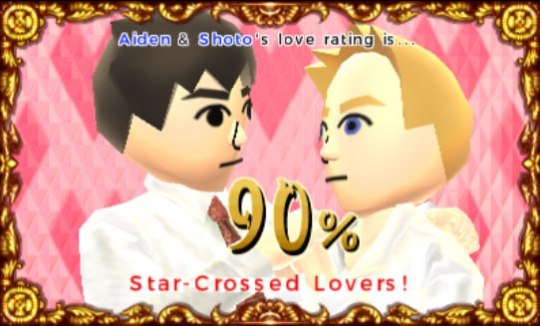

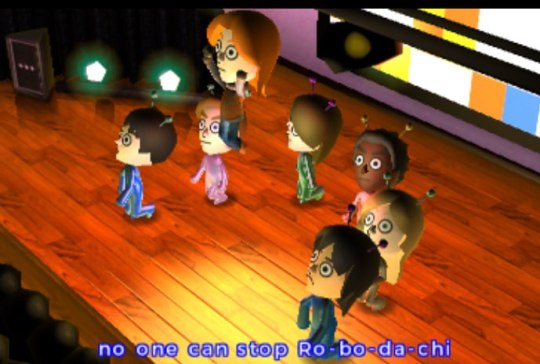


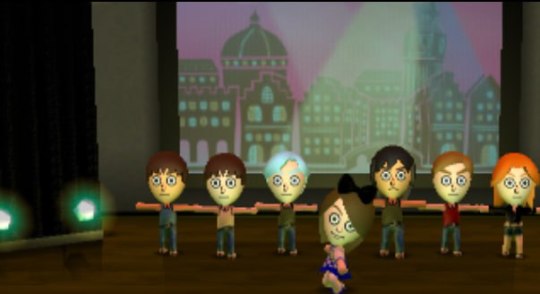
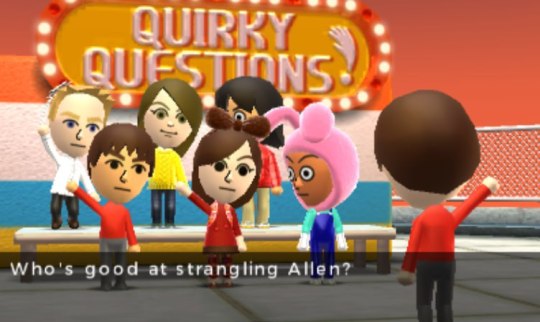

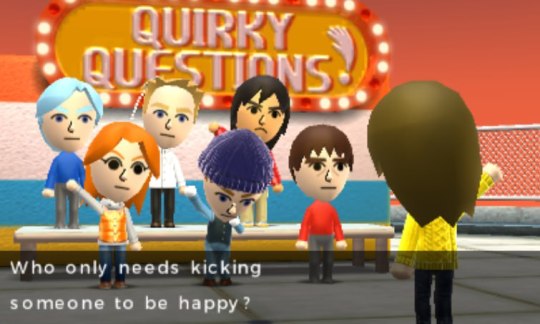
The silliest of all:
Merry Christmas everyone, y'all should open Tomodachi and listen to it's background shshh
#mii#miiblr#tomodachi life#mii gunner#guest mii#mii swordfighter#mii brawler#super smash bros#i love miis
15 notes
·
View notes
Text
Unlock the Power of Reiki with Holiistiichealers’ Reiki Healing Course in Delhi

In today’s fast-paced world, the quest for holistic wellness and inner peace has become more important than ever. Many people are turning to alternative healing practices to find balance and rejuvenate their mind, body, and spirit. One such powerful and transformative practice is Reiki, an ancient Japanese healing technique that channels universal life force energy to promote healing and well-being. If you’re looking to delve into this incredible practice, Holiistiichealers in Delhi offers a comprehensive Reiki Healing Course designed to empower you with the knowledge and skills to heal yourself and others.
What is Reiki?
Reiki, which means “universal life energy” in Japanese, is a gentle yet powerful healing modality that involves the transfer of energy from the hands of a practitioner to the recipient. This energy helps to clear blockages, balance the body’s energy centers (chakras), and promote physical, emotional, and spiritual healing. Developed by Dr. Mikao Usui in the early 20th century, Reiki has gained global recognition for its effectiveness in reducing stress, alleviating pain, and enhancing overall well-being.
Why Learn Reiki?
Learning Reiki offers numerous benefits that extend beyond personal healing. Here are some compelling reasons to consider enrolling in a Reiki Healing Course:
Self-Healing: Reiki empowers you to take control of your health by providing a tool for self-care. You can use Reiki to address physical ailments, emotional imbalances, and spiritual growth.
Healing Others: Once attuned to Reiki, you can channel healing energy to help family, friends, and even pets. It’s a beautiful way to support the well-being of those you love.
Professional Practice: Many individuals incorporate Reiki into their professional lives as complementary therapy. It can enhance the services of massage therapists, nurses, counselors, and other healthcare professionals.
Stress Reduction: Reiki promotes deep relaxation, reducing stress and anxiety. It helps you to stay centered and calm amidst the chaos of daily life.
Spiritual Growth: Reiki is not just a healing technique but also a path to spiritual enlightenment. It deepens your connection with universal energy and enhances your intuition.
Holiistiichealers’ Reiki Healing Course: A Path to Mastery
At Holiistiichealers, we believe in the transformative power of Reiki and are committed to providing a comprehensive and immersive learning experience. Our Reiki Healing Course is designed for both beginners and those looking to deepen their practice. Here’s what you can expect from our course:
Level 1: Reiki First Degree (Shoden)
The first level of Reiki is focused on self-healing and the basics of energy healing. In this introductory course, you will learn:
History and Principles of Reiki: Understanding the origins and philosophy of Reiki.
Hand Positions: Learning the standard hand positions for self-healing and healing others.
Energy Sensitivity: Developing the ability to feel and work with energy.
Self-Treatment: Practicing Reiki on yourself to promote balance and healing.
Basic Anatomy and Chakras: Gaining a foundational understanding of the body’s energy centers.
Level 2: Reiki Second Degree (Okuden)
The second level deepens your connection to Reiki and introduces advanced techniques. This level includes:
Sacred Symbols: Learning and using the three Reiki symbols for power, mental/emotional healing, and distance healing.
Distance Healing: Techniques for sending Reiki across time and space.
Emotional and Mental Healing: Addressing emotional issues and mental blocks.
Advanced Techniques: Incorporating symbols into your practice to enhance the flow of energy.
Level 3: Reiki Master Practitioner (Shinpiden)
This level is for those who wish to become master practitioners, offering a deeper understanding and stronger connection to Reiki energy. It includes:
Master Symbol: Learning the master symbol to increase the effectiveness of Reiki energy.
Advanced Healing Techniques: Techniques for complex healing situations.
Personal Growth: Deepening your spiritual practice and connection to universal energy.
Level 4: Reiki Master Teacher
The final level is for those who wish to teach Reiki to others. It covers:
Teaching Methods: How to structure and conduct Reiki courses.
Attunements: Learning the process of attuning others to Reiki.
Course Development: Creating your own Reiki teaching materials and courses.
Why Choose Holiistiichealers for Your Reiki Training?
At Holiistiichealers, we are dedicated to providing a nurturing and supportive environment for your Reiki journey. Here are a few reasons to choose us:
Experienced Instructors: Our courses are led by experienced Reiki masters who are passionate about sharing their knowledge and guiding you through your healing journey.
Comprehensive Curriculum: We offer a detailed and structured curriculum that covers all aspects of Reiki, from basic principles to advanced techniques.
Hands-On Practice: Our courses include ample hands-on practice sessions, allowing you to gain confidence and experience in using Reiki.
Community Support: We foster a supportive community of like-minded individuals, providing ongoing support and opportunities for continued learning and growth.
Certification: Upon completion of each level, you will receive a certificate, recognizing your proficiency and readiness to practice Reiki.
Embark on Your Reiki Journey Today
Reiki is a powerful tool for transformation and healing. Whether you are seeking to heal yourself, help others, or embark on a professional path, Holiistiichealers’ Reiki Healing Course in Delhi offers a comprehensive and enriching learning experience. Our commitment to holistic wellness ensures that you receive the highest quality training in a supportive and nurturing environment.
Join us at Holiistiichealers and take the first step on your journey to becoming a Reiki healer. Experience the profound benefits of Reiki and unlock your potential to heal and be healed. Contact us today to enroll in our Reiki Healing Course and begin your journey toward holistic well-being and spiritual growth.
0 notes
Text
The Best Martial Arts for Learning Katana Techniques
There are different martial arts practiced worldwide, and each is characterized by its unique body movements, fighting styles, and choice of weapons. You can turn any tool or equipment into a weapon, depending on the fighting style. Common weapons used are dragons, Katanas, and spears.
Katanas are long curved swords with long braced handles incorporated as a martial arts weapon. Traditionally, Japanese samurais used katanas during combat. There are different martial arts in which Katana techniques were initially taught, where stealth and swift movements are the main characteristics.
Recently, martial arts have been showcased as a sport, and trained individuals have joined to display their prowess wielding the katana. To date, the Japanese culture has specific martial arts that teach katana techniques. Studies have shown that the Katanas used in modern days are forged using the same traditional method and elements. This knowledge has been passed down to generations through apprenticeship. Here are the best martial arts for learning katana techniques.
Kenjutsu
Kenjutsu refers to the Japanese art of handling the sword. Contrary to other techniques, Kenjutsu uses bamboo swords and body armor, and the main essence is to practice and display battlefield experience. Kenjutsu is more of a sport than it is a fighting competition. Usually, there are no rivals in Kenjutsu, although contact striking is allowed on the other person. Different schools use different unique fighting styles, weapons, and movement techniques. The instructor usually directs and guides the two fighters, where the attacker is given execution space and movement instructions. The bamboo swords are blunted out on the edges to prevent injury infliction to your opponent.
Kendo
Kendo is the sword’s way in Japanese. Kendo originated from samurai rivalries and feuds in ancient Japan. Bamboo swords and protective clothing used during training and sparring consist of bracelets, helmets, and gauntlets. Kendo is not competitive. Thus, there are no winners and losers. Discipline, technique, and spiritual awareness are important aspects of a sparring session. Kendo is being adopted as a sport with no fighter classifications, unlike other fighting sports like boxing. The players have specific skills and tactics, where a point is scored by striking the opponent’s body.
Laido
Unlike kendo and kenjutsu, a person trains and practices alone with a katana sword and a target object. Laido, as a martial art, emphasizes utilizing momentum, where one draws the sword very fast and cuts using the drawing momentum without losing sight of the target object or opponent. Laido is mainly used for self-defense rather than on the battlefield.
Training is done alone because, unlike kendo, where you are competing with an opponent to showcase your skills. Laido is practiced to get your brain and body movement to synchronize, improving speed and accuracy.
Battojutsu
Battojutsu is similar to laido, in that, it emphasizes drawing speed and power and utilizing momentum to cut the target object. Battojutsu focuses on the cutting itself. Locking your eyes on the target while drawing requires harmony and hand-eye coordination. Battojutsu aims at improving the accuracy and precision of the cut. As done in laido, practice in Battojutsu is exercised alone. You must know the blade size, sharpness, and weight to perfect a strike. Battojutsu practice is done using actual Katanas rather than bamboo swords. To strike with accuracy and precision, you need to ‘feel’ the sword.
Tenshin Shoden
Tenshin Shoden is among the oldest forms of Japanese martial arts that incorporate the use of katana blades. Much of its existence is said to have been directly influenced by the gods. Tenshin Shoden focuses on the broader aspect of martial arts. Blades in Tenshin Shoden are used for competition, combat, and practicing harmony in body movement and the spirit. Tenshin Shoden is passed down to generations through books and teachings, practical applications, and apprenticeship.
Ninjutsu
The ‘ninja’ is a spiritual embodiment that is believed to be mythical. Ninjutsu is a martial art that adopts lots of weaponry, especially cutting weapons. Ninjutsu is practiced as a competitive form of sport and a method of spiritual grooming and physical fitness. Like other martial arts, discipline is an important characteristic instilled in the practice of Ninjutsu.
Ninjas fighting in ancient Japan hid in plain sight, forming their own art of guerilla warfare. Warriors practicing Ninjutsu need to understand human anatomy and emotions because attacks are supposed to be made with stealth and precision on vital and vulnerable parts of the human body. The katana is cloaked in ninjutsu. Thus, speed and accuracy are required to draw and execute the target subject without exposing your katana. Ninjas live in closely packed communities united by ninjutsu. Effective communication is required for proper coordination of attacks and movements in combat. Ninjutsu is a well-rounded martial art that not only trains the art of the sword but also unarmed physical combat and fighting techniques.
Aikido
Aikido is oriented towards physical combat, just like judo and jujitsu. In Japanese, aikido is the harmony of nature with one’s spirit. Its training aims to achieve spiritual awareness through martial arts. Intense training focuses on physical combat and the use of spears and blades. During training, wooden swords are used to learn movement and styles of wielding the actual sword. As you advance, the actual sword is used to allow you to become one with the sword, not just as a cutting tool.
Similar to laido, utilizing momentum is practiced. Your opponent's momentum is the most effective weapon. Redirection is adopted from the Chinese martial art Tai-Chi, where you turn your opponent’s fighting energy against themselves. Therefore, aikido is simply defined as a mix of physical combat and weaponry tactics.
Conclusion
Martial arts fuse different disciplines with your body and transform you into a formidable tool. Katanas are still a great part of the martial arts world, and learning how to use a katana as a martial artist is crucial. Practicing martial arts should not only be done for self-defense but also as a method of instilling discipline and connecting with nature on a spiritual level.
0 notes